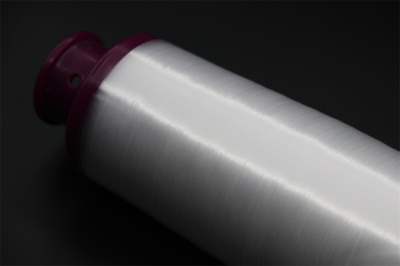
Comparison of Common Molding Processes for Carbon Fiber Reinforced Thermoplastic Composite Products
2024-06-14 15:20
In recent years, both domestically and internationally, new molding technologies for carbon fiber reinforced thermoplastic composite products have emerged. These technologies include automatic fiber placement, ultrasonic rapid consolidation molding, laser consolidation molding, electron beam curing, vacuum-assisted molding, and 3D printing. Despite the high efficiency, low cost, low energy consumption, and high degree of automation these new molding technologies offer, traditional methods still play a significant role due to the current technological limitations in carbon fiber applications.
Thermoplastic resins like PEEK, PI, and PPS exhibit strong corrosion resistance, damage tolerance, impact resistance, and fracture toughness. They also soften and melt upon heating, allowing for repeated use. When combined with high-strength carbon fiber, these carbon fiber reinforced thermoplastic composites have quickly become popular in aerospace, military, and high-end civilian applications. Over time, various molding processes have been developed for carbon fiber applications. Saxobran New Material Co., Ltd, specializes in the production of carbon fiber composite products and has compared the advantages and disadvantages of several widely used and mature molding methods.
Autoclave Molding Process
Autoclave molding uses high-temperature compressed gas in the autoclave to heat and pressurize pre-laid prepregs, curing them into shape. This method is extensively used for the integral molding of resin-based composite materials and holds significant importance in industrial production. For example, 80% of the carbon fiber reinforced thermoplastic composite structural parts used in aircraft fuselage, rudder, elevators, wing skins, and tail fins are manufactured using autoclave molding.
During the autoclave molding process, the prepreg is sealed in a vacuum bag within the mold, ensuring uniform pressure from the compressed air in all directions. The high-speed flow of compressed air inside the autoclave ensures uniform heating during both heating and cooling stages. Moreover, the stable pressure and temperature within the autoclave result in low porosity and uniform fiber distribution in the composite products. Thus, autoclave-molded carbon fiber reinforced thermoplastic products exhibit uniform pressure/heat distribution and stable quality, making this method suitable for producing large and complex structural parts. However, the drawbacks include the bulky and complex equipment, high energy consumption, substantial investment and production costs, and low efficiency.
Compression Molding Process
Compression molding involves different stages such as material plasticization, flow to fill the mold cavity, and resin curing. During the flow of the carbon fiber reinforced thermoplastic composite molding material into the mold cavity, both the thermoplastic resin and the reinforcing high-strength carbon fiber need to flow, resulting in higher molding pressure compared to other methods. This process requires a hydraulic press capable of pressure control and high-strength, high-precision, high-temperature resistant metal molds. Wuxi Zhishang New Material generally employs autoclave and compression molding methods for manufacturing carbon fiber reinforced thermoplastic composite products.
Compression-molded thermoplastic carbon fiber reinforced products exhibit low internal stress, minimal warpage, smooth surfaces, high dimensional accuracy, stable mechanical properties, low shrinkage, and good repeatability. This method is suitable for molding large flat products with high production efficiency and the capability to mold complex structures in one go, facilitating mass production, specialization, and automation. However, the complexity and high cost of mold manufacturing, long molding cycles, and challenges in achieving complete mold filling are notable disadvantages in carbon fiber applications.
Filament Winding Process
Filament winding involves preheating resin-impregnated continuous high-strength carbon fibers and winding them onto a mandrel. Continuous heating and pressure application consolidate the prepreg into a unified structure, forming the desired component layer by layer. Factors such as heating temperature, winding method, extrusion gap, resin temperature, and fiber winding tension directly impact product quality.
Compared to the autoclave process, filament winding is more conducive to mechanized production and allows for adjustments in carbon fiber strength performance by altering winding patterns. However, due to the inability of carbon fibers to tightly adhere to the mandrel surface during winding, this method is unsuitable for manufacturing parts with concave or convex surfaces.
Pultrusion Process
Pultrusion involves impregnating high-strength carbon fibers in resin and pulling them through a die where they are shaped and cured under pressure, forming continuous lengths of composite products. This process is suitable for manufacturing continuous, constant cross-section components, meaning it can only produce linear profiles and not complex-shaped structural parts. Additionally, due to the anisotropic properties of the products, their transverse strength is limited, presenting application constraints in carbon fiber reinforced products.
For large-scale production of linear carbon fiber reinforced thermoplastic products, this process offers high automation, low energy consumption, high carbon fiber content, stable product quality, and low raw material consumption. It is a favored method for producing specific product types.
Emerging Technologies
In recent years, numerous new molding technologies for carbon fiber reinforced thermoplastic composite products have emerged globally. These include automatic fiber placement, ultrasonic rapid consolidation, laser consolidation, electron beam curing, vacuum-assisted molding, and 3D printing. These new technologies offer high efficiency, low cost, low energy consumption, and a high degree of automation. However, considering the current technological level in China, there remains a significant gap in research and practical application compared to developed countries. For a considerable period, traditional molding methods will continue to be essential for producing carbon fiber reinforced thermoplastic composite structural parts and other products in carbon fiber applications.








